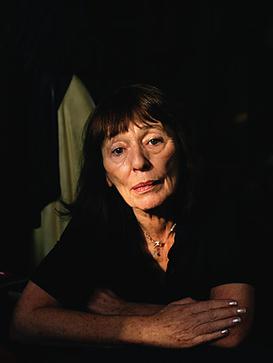
Dame Beryl Margaret Bainbridge was an English writer. She was primarily known for her works of psychological fiction, often macabre tales set among the English working class. She won the Whitbread Awards prize for best novel in 1977 and 1996, and was nominated five times for the Booker Prize. She was described in 2007 as a national treasure. In 2008, The Times named Bainbridge on their list of the "50 greatest British writers since 1945".

Gish Jen is a contemporary American writer and speaker.

Zadie Smith FRSL is an English novelist, essayist, and short-story writer. Her debut novel, White Teeth (2000), immediately became a best-seller and won a number of awards. She became a tenured professor in the Creative Writing faculty of New York University in September 2010.

Ruth Prawer Jhabvala was a British and American novelist and screenwriter. She is best known for her collaboration with Merchant Ivory Productions, made up of film director James Ivory and producer Ismail Merchant.
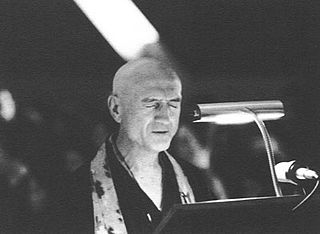
Philip Kapleau was an American teacher of Zen Buddhism in the Sanbo Kyodan tradition, which is rooted in Japanese Sōtō and incorporates Rinzai-school koan-study. He also strongly advocated for Buddhist vegetarianism.

Zen at War is a book written by Brian Daizen Victoria, first published in 1997. The second edition appeared in 2006.
Farida Karodia is a South African novelist and short-story writer.
Linda Coverdale is a literary translator from French. She lives in Brooklyn, New York, and has a Ph.D in French Literature. She has translated into English more than 60 works by such authors as Roland Barthes, Emmanuel Carrère, Patrick Chamoiseau, Maryse Condé, Marie Darrieussecq, Jean Echenoz, Annie Ernaux, Sébastien Japrisot, Tahar Ben Jelloun, Philippe Labro, Yann Queffélec, Jorge Semprún, Lyonel Trouillot, Jean-Philippe Toussaint, Jean Hartzfeld, Sylvain Tesson and Marguerite Duras.

Hakuun Yasutani was a Sōtō priest and the founder of the Sanbo Kyodan, a lay Japanese Zen group. Through his students Philip Kapleau and Taizan Maezumi, Yasutani has been one of the principal forces in founding western (lay) Zen-practice.
Yōko Ogawa is a Japanese writer. Her work has won every major Japanese literary award, including the Akutagawa Prize and the Yomiuri Prize. Internationally, she has been the recipient of the Shirley Jackson Award and the American Book Award. The Memory Police was also shortlisted for the International Booker Prize in 2020.
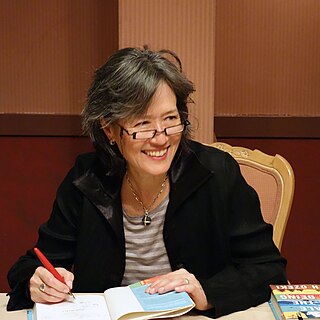
Ruth Ozeki is an American-Canadian author, filmmaker and Zen Buddhist priest. Her books and films, including the novels My Year of Meats (1998), All Over Creation (2003), A Tale for the Time Being (2013), and The Book of Form and Emptiness (2021) seek to integrate personal narrative and social issues, and deal with themes relating to science, technology, environmental politics, race, religion, war and global popular culture. Her novels have been translated into more than thirty languages. She teaches creative writing at Smith College, where she is the Grace Jarcho Ross 1933 Professor of Humanities in the Department of English Language and Literature.
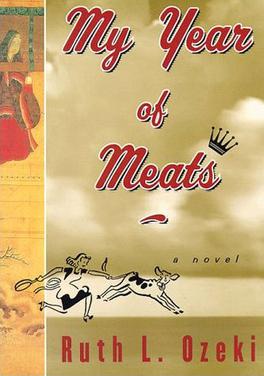
My Year of Meats is the 1998 debut novel by Ruth Ozeki. The book takes advantage of the differences between Japanese and American culture to comment on both.
Kazuko Yoshiyuki is a Japanese actress, voice actress and essayist.
Zen was introduced in the United States at the end of the 19th century by Japanese teachers who went to America to serve groups of Japanese immigrants and become acquainted with the American culture. After World War II, interest from non-Asian Americans grew rapidly. This resulted in the commencement of an indigenous American Zen tradition which also influences the larger western (Zen) world.
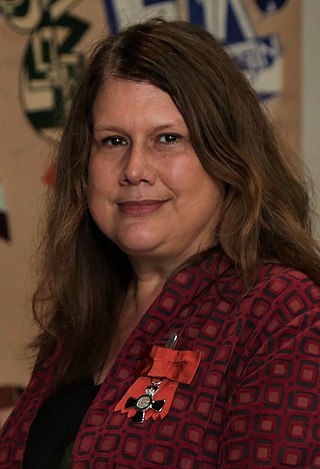
Paula Jane Kiri Morris is a New Zealand novelist, short-story writer editor and literary academic. She is an associate professor at the University of Auckland and founder of the Academy of New Zealand Literature.
The 2013 Booker Prize for Fiction was awarded on 15 October 2013 to Eleanor Catton for her novel The Luminaries. A longlist of thirteen titles was announced on 23 July, and these were narrowed down to a shortlist of six titles, announced on 10 September. The jury was chaired by Robert Macfarlane, who was joined by Robert Douglas-Fairhurst, Natalie Haynes, Martha Kearney, and Stuart Kelly. The shortlist contained great geographical and ethnic diversity, with Zimbabwean-born NoViolet Bulawayo, Eleanor Catton of New Zealand, Jim Crace from England, Indian American Jhumpa Lahiri, Canadian-American Ruth Ozeki and Colm Tóibín of Ireland.

All Over Creation is a novel by Ruth Ozeki about Yumi Fuller, the Japanese-American daughter of a potato farmer in Idaho who returns home as an adult to care for her parents, Lloyd and Momoko, and stumbles into the growing controversy around genetically modified food (GMOs). The book was first published in 2003 by Viking Press and reprinted by Penguin in 2004.
Halving the Bones is a documentary written, produced, and directed by author Ruth Ozeki. The film is shot in color/black-and-white and runs 70 minutes in length. The film premiered in 1995 in film festivals such as the Sundance Film Festival, San Francisco Asian American Film Festival, and the Margaret Mead Film Festival. Ozeki's film has been awarded the International Documentary Association Distinguished Achievement Award, the Kodak Award for Creative Cinematography, and the San Francisco International Film Festival Certificate of Merit.

Sayaka Murata is a Japanese writer. She has won the Gunzo Prize for New Writers, the Mishima Yukio Prize, the Noma Literary New Face Prize, and the Akutagawa Prize.

The Book of Form and Emptiness is a novel by American author Ruth Ozeki, published in 2021 by Viking. Ozeki's fourth novel, the book won the 2022 Women's Prize for Fiction. The story follows a boy who hears voices from inanimate objects while the narrative explores themes of mental illness and bereavement.













